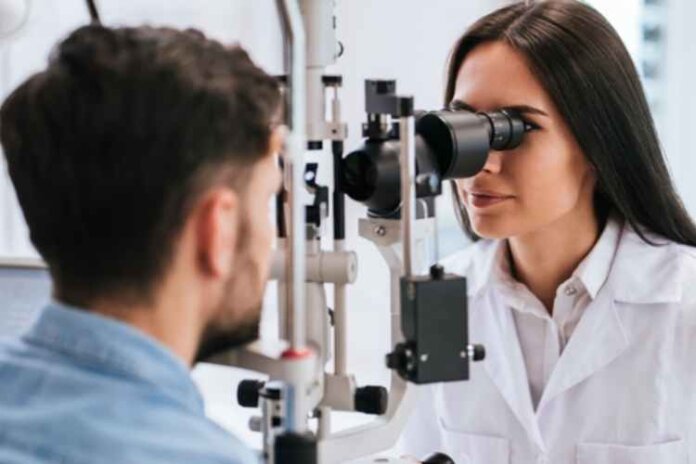
According to the CDC, having a comprehensive eye exam performed is the number one way to prevent vision loss. Are you overdue?
If it’s been a while since you last saw the optometrist, the answer is probably yes. And, if you’re like most Americans, you’ve been putting it off because you’re afraid of or uncomfortable with the eye doctor.
While it might sound scary, an eye exam is nothing to fear. Read on to learn what to expect during your appointment and regain control of your optic health today!
Visual Acuity and Refraction Exam
These vision tests measure how clearly you can see and determine whether you need prescription lenses or contacts. They also provide information on other aspects of your eyesight, like peripheral vision.
The visual acuity test is the big eye exam chart that comes to mind when you imagine a trip to the eye doctor. The refraction exam includes looking through a series of different lenses, which alter your vision. This determines whether you require prescription lenses, and if so, how strong they should be.
Binocular Testing
These exams can help identify a variety of eye conditions and abnormalities. This includes checking for muscle weakness and drifting known as amblyopia.
You’ll likely be asked to follow a moving light with your eyes, and to observe a variety of images set at various depths. A cover test might also be administered to rule out strabismus, a mild crossing of the eyes.
Ocular Health Exam
This part of your appointment will further assess overall eye health, examining your eyes both inside and out.
A slit lamp will be used to perform a detailed visual inspection, checking for eye disease and damage, such as cataracts and corneal abrasions. Your doctor will also check each of your eye’s internal pressure, using tonometry. This might include a gentle puff of air or momentary eye contact.
While this part of your eye check might seem scary to think about, it’s perfectly painless and over in an instant!
In some cases, your pupils will be dilated, allowing a more in-depth observation of their function. This also makes the retina and optic nerve easier to examine.
Before You Leave the Office
Once your tests are complete, your optometrist will discuss your visual health with you. They may prescribe additional tests if anything seems out of the ordinary or if you require prescription lenses.
You’ll also have an opportunity to ask questions about their findings and your vision overall. If you’ve noticed a change in your vision or have been experiencing eye irritation, be sure to mention it.
You might come away with a change in lenses, advice on lifestyle changes that support better vision, and helpful products like dry eye prescription medications.
Schedule Your Comprehensive Eye Exam
Now that you know what to expect when you visit the optometrist, it’s time to schedule a comprehensive eye exam.
Remember to plan for a full day of recovery, especially if your eyes will be dilated during the appointment. You’ll also need to arrange transportation to and from your office visit, as driving will be strictly prohibited afterward.
Was this article informative? If so, stick around and check out the rest of our blog posts! We’ve got all the latest and greatest from around the web when it comes to health, fitness, lifestyle, and more.











